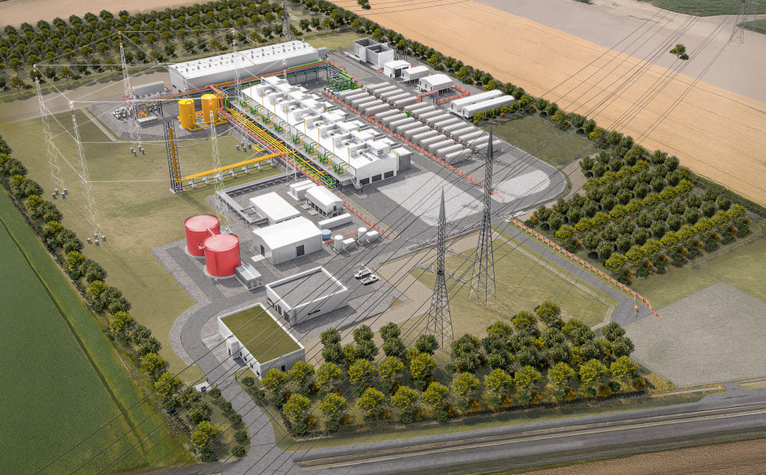 © STRABAG/Siemens Energy
© STRABAG/Siemens Energy
- Location advantages
- Innovation and digitalisation
- Research & development
- News
Austria is becoming a hydrogen hub
24. November 2025Austria is committing to hydrogen—with a clear strategy, multi-billion-euro investments by the Federal Government and strong partners. Companies such as OMV, Siemens Energy, STRABAG and voestalpine are investing hundreds of millions of euros in their projects. This strengthens security of supply, boosts competitiveness and opens excellent opportunities for international companies at the location.
The Federal Government is establishing clear framework conditions: an import strategy, the Hydrogen Certification Regulation, investment grants for electrolysers and a new Gas Industry Act to create the hydrogen starter network. A total of €820 million will be available until 2026 to scale up the hydrogen economy. In addition, four national flagship projects are being supported with €275 million. The import strategy is being developed in close coordination with Germany and Italy, as well as with partner countries Algeria and Tunisia—integrating Austria into central European value chains.
Flagship projects set new benchmarks
OMVOMV (), together with Siemens Energy and STRABAG, is building Austria’s largest electrolyser for green hydrogen and one of the largest in Europe: the “UpHy large” project, with 140 megawatts of capacity, €700 million of investment and up to 23,000 tonnes of green hydrogen produced annually. The facility will save around 150,000 tonnes of CO₂ each year. European instruments such as the European Hydrogen BankEuropean Hydrogen Bank () further enhance investment security. Masdar, the renewable energy company of the Emirate of Abu Dhabi and one of the world’s largest producers of energy from renewable sources, is joining the project with a 49 percent stake, providing OMV with a financially strong partner for construction costs.
voestalpinevoestalpine (), together with Primetals Technologies and Rio Tinto, is launching the “Hy4Smelt” research project for CO₂-neutral steel production. It combines hydrogen-based direct reduction with an electric smelting process and is supported by EU and national funding. The total project volume is around €170 million, with commissioning planned from 2027 onwards.
Research and innovation strengthen the location
Alongside industrial projects, targeted investment is being made in technology development. The University of Applied Sciences Upper Austria has opened a new hydrogen research centre to support companies in implementing climate-neutral processes—such as component testing, sector coupling and the use of climate-neutral gases. The European project ENDURIONENDURION (), led by the Austrian Institute of Technology (AIT), is developing a new generation of electrolysers that are more efficient and resource-efficient.
Hydrogen infrastructure and networking
With the Hydrogen South Corridor and regional Hydrogen Valley initiatives, infrastructure for a sustainable hydrogen economy is being expanded. The South Corridor is anchored as a priority EU route, and from 2035 green hydrogen is expected to flow at industrial scale from North Africa to Austria and Germany. Austria is positioning itself within the European Hydrogen BackboneEuropean Hydrogen Backbone () as a transit and distribution hub, contributing expertise in storage, networks and operation. Along the import chains, the Hydrogen Import Alliance Austria brings together industrial and network partners. The Hydrogen Partnership Austria (HyPA)Hydrogen Partnership Austria (HyPA) () links policymakers, industry and research.
This level of interconnectedness, combined with targeted funding, reinforces Austria’s role as a technology hub and as an attractive location for international cooperation and investment, with opportunities extending far beyond the energy sector.
Read more about the sector here: Green Tech and Clean Tech in AustriaGreen Tech and Clean Tech in Austria ().